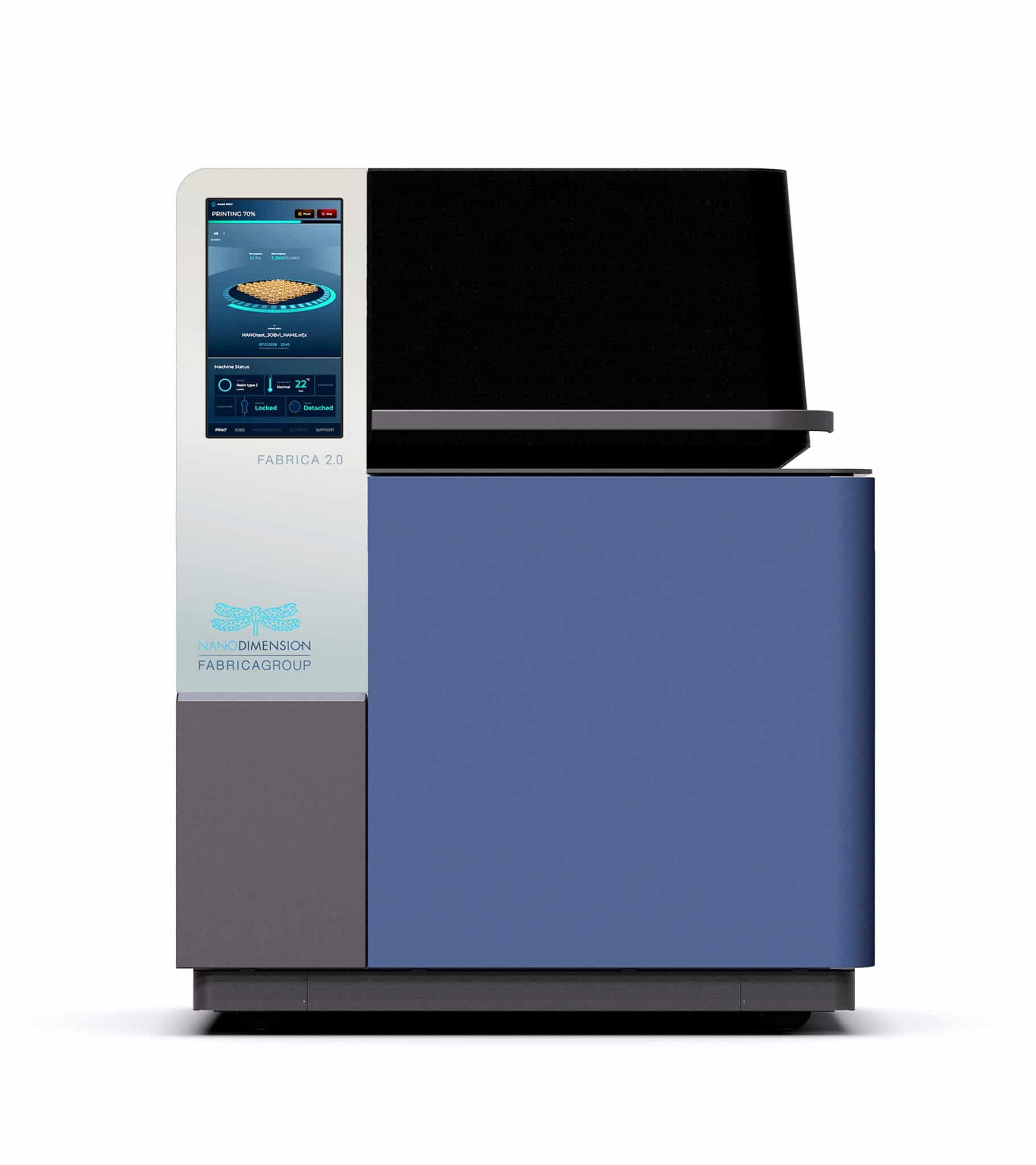Accumold, a leading micro-molding company, has taken delivery of a Fabrica 2.0 micro 3D printer from Fabrica Group. The technology was previously known as the Tera 250 and was created by Nanofabrica which has now been acquired by Nano Dimension.
For over 30 years, Accumold has made its reputation as the leader in the art and science of micro-molding and routinely undertakes high volume production of tiny plastic parts and components (or larger parts with intricate features) for an international and pan-industrial customer base. The company exists in a world where tolerances are measured to the micron or sub-micron level and is the world’s only truly vertically integrated micro molder with design, micro tooling, micro-molding, validation, and automated assembly all under one roof.

Roger Hargens, CEO & President of Accumold commented: “As a company, we are proud of the fact that we stay ahead of the curve when it comes to the evolution of new technologies and techniques. This is symbolized by the fact that to achieve the exacting tolerances that matter to our customers, we developed our own micro molding technologies which out-perform any off-the-shelf injection molding technologies serving the micro-manufacturing sector. For many years, we have been keeping an eye on AM / industrial 3D printing to see how the technology may be of use to us and our customers, but until we were introduced to Fabrica Group, all commercially available technologies fell short in terms of precision and tolerance attainment and speed and repeatability. We are truly excited to have just taken delivery of Fabrica Group’s Fabrica 2.0 micro AM machine, and we see this as an important strategic move that will further reinforce our market-leading credentials in the micro-molding arena. It also plays to the fact that the future of AM is not as a replacement to traditional manufacturing processes that we use daily, but instead is a complementary technology that adds to the agility and versatility of or product development services.”
Fabrica Group’s Fabrica 2.0 brings the benefits of AM to micro manufacturers such as Accumold for the first time, including hitherto impossible part complexity (enhancing design and functionality), no tooling costs, minimal setup costs, and the ability to mass customize and personalize products. A versatile technology appropriate for prototyping, small batches, and mass manufacturing, the Fabrica 2.0 is stimulating innovation in the micro-manufacturing sector.
Manufacturing on Demand
The technology is driven by innovation in hardware, software, and materials. It uses adaptive optics which electronically control critical optical working point parameters such as focus, tilt, and astigmatism. In addition, it incorporates an optomechanical apparatus that facilitates real-time corrections of other working parameters — mainly location and accuracy in the XY plane — and which also corrects for degrees of freedom such as wobbling to allow for a better surface finish on parts.
The Fabrica 2.0 micro 3D printer also uses a “multi-resolution” strategy, which means that areas, where fine details are required, are printed relatively slowly, but where the details are not so exacting, the part is printed at speeds 10-100 times faster. This makes the entire printing speed anything from 5-100 times faster than other micro 3D printer platforms.
Other enabling technologies for Accumold in the Fabrica 2.0 are algorithms used to control and optimize the hardware. It uses feedback algorithms in a closed loop to increase accuracy and repeatability in production, and positioning errors are corrected using laser distance measurements. Another algorithm family is focused on customized file preparation, optimizing print angle, build-plate orientation, and supports, all to ensure accurate, timely, and cost-effective part production.
Rigorous R&D has led to the development of proprietary materials for the Fabrica 2.0 (based on the most commonly used industry polymers such as ABS and PP) with modifications in polymerization radii, viscosity, surface tension, and spectral-optical penetration depth which enable the manufacture of ultra-high resolution in parts.
The combination of hardware, software, and material innovations means Fabrica 2.0 micro 3D printer can be applied to the most exacting micro manufacturing applications.
Hargens, Accumold, continued: “The hugely impressive technology that Fabrica Group has developed will in short order add significant possibilities for us and our customers. With the Fabrica 2.0 we can already cater for customers requiring low to medium-sized runs economically, as the same economies of scale do not exist when using AM as opposed to traditional molding technologies. We can also create micro parts with geometric complexity either impossible or prohibitively expensive using the micro molding process. However, it is in the area of direct rapid soft tooling (DRST) that we see huge future opportunities. The accuracy of Fabrica 2.0 and the robustness of the materials used mean that the technology can produce DRSTs that can be used on traditional molding machines. This unlocks new business possibilities for us and our customers as up until this point we have been restricted to the use of long lead time and expensive traditionally manufactured mold tools for the achievement of any volume of molding, from a prototype, runs all the way through to mass manufacture. The Fabrica 2.0 stimulates the business case for a process chain that includes DRST, with the possibility of dramatically shorter lead times from file to injected part and at costs reduced from thousands of dollars to tens. This will be a game-changer for some of our customers.”
* This article is reprinted from 3D Printing Media Network. If you are involved in infringement, please contact us to delete it.
Author: Victor Anusci

Leave A Comment